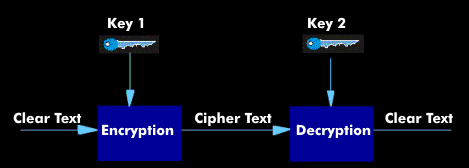Rivest-Shamir-Adleman (RSA)
The best-known, most proven and best-studied asymmetric encryption, which has the rank of an international quasi- standard and has been standardized by ISO under ISO 9307, is RSA encryption, named after its inventors Ronald L. Rivest, Adi Shamir and Leonard Adleman. The security of this encryption is based on the difficulty of factorizing a large natural number, i.e., finding all the prime numbers by which a number can be divided without a remainder.
The RSA algorithm is calculated as the product of two very large, freely chosen prime numbers: n = p x q. Although n is announced as part of the public key, it is very difficult to determine the prime numbers p and q from n, especially if there are still special requirements for p and q.
The inventors of this method already suggested using hundred- digit prime numbers for p and q when presenting the method. Today, a length of 512 bits is usually selected for n, i.e., approx. 77-digit decimal numbers for p and q; in some applications, 768 bits are already preferred as the key length. An implementation of the RSA method is also interesting for IBM mainframes: a digital signature with a key length of 512 bits takes about 5 ms. If a digital signature is made with the RSA procedure, it belongs to the class "Digital Signatures Giving Message Recovery", because the verification shows the signed message.

